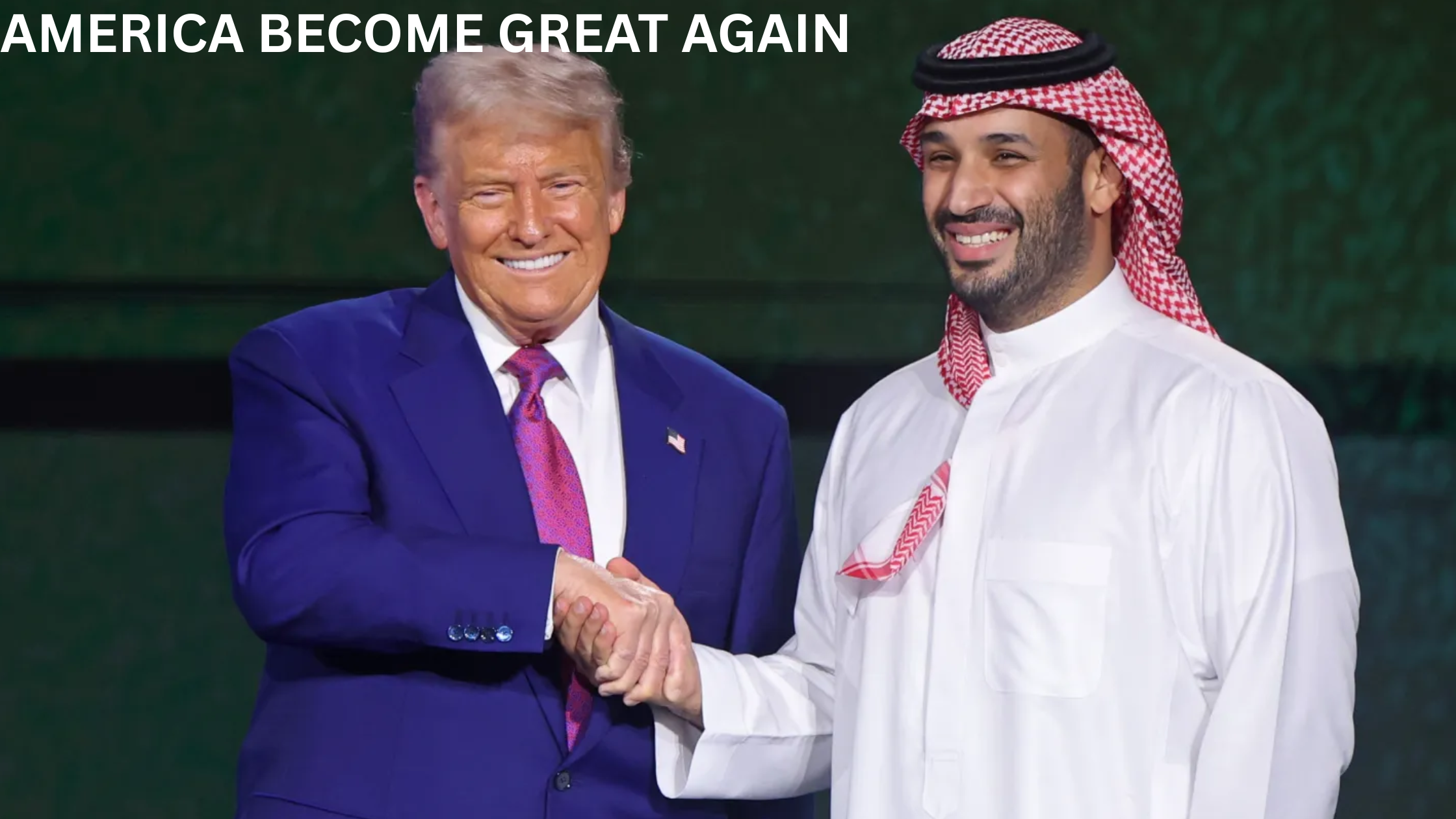In a historic move, President Trump lifts sanctions on Syria amid a groundbreaking $142 billion Saudi arms deal, signaling a significant shift in U.S. foreign policy. This strategic decision is poised to reshape the geopolitical landscape of the Middle East, fostering new alliances and economic opportunities. As the region faces ongoing challenges, this shift opens the door for potential stability, but also introduces complex dynamics that will influence global relations. In this post, we explore the implications of these bold moves, examining their effects on Syria, Saudi Arabia, and the U.S. itself.
A Historic Shift in U.S. Middle East Policy
In a significant realignment of U.S. foreign policy, President Donald Trump has lifted all sanctions on Syria, marking a departure from years of diplomatic isolation. This decision coincides with a monumental $142 billion arms deal with Saudi Arabia, underscoring a strategic pivot towards economic partnerships in the Middle East. The lifting of sanctions aims to facilitate Syria’s reconstruction efforts and foster regional stability. President Trump’s approach emphasizes economic collaboration over military intervention, signaling a new era in U.S.-Middle East relations. By engaging with Syria’s new leadership and strengthening ties with Saudi Arabia, the administration seeks to reshape the geopolitical landscape of the region. This policy shift reflects a broader vision of promoting prosperity and peace through strategic alliances and economic investment. As the U.S. redefines its role in the Middle East, these developments may have far-reaching implications for international diplomacy and regional dynamics.
The Evolution of U.S.-Syria Relations
The relationship between the U.S. and Syria has been turbulent and complex, marked by decades of political friction and shifting alliances. For years, Syria was subject to stringent U.S. sanctions due to its government’s alleged involvement in terrorism and its support for groups deemed hostile to U.S. interests. However, the recent decision to lift sanctions on Syria, as part of a broader geopolitical strategy, represents a dramatic shift. This move is intertwined with the $142 billion Saudi arms deal, which signals a new chapter in Middle Eastern diplomacy. The lifting of sanctions is aimed at fostering economic development in Syria, while simultaneously engaging with key regional players like Saudi Arabia. This change is not just a policy reversal but a calculated step toward improving stability in the region. With this new approach, President Trump seeks to build bridges rather than barriers, promoting dialogue over isolation in U.S.-Syria relations.
The $142 Billion Saudi Arms Deal: Details and Implications
The $142 billion arms deal between the United States and Saudi Arabia is one of the largest in history and a key component of President Trump’s Middle East strategy. This deal includes a wide range of advanced military technology, including fighter jets, missile defense systems, and naval assets, aimed at enhancing Saudi Arabia’s defense capabilities. The deal is not just about military equipment; it is part of a broader diplomatic effort to solidify U.S.-Saudi relations while countering the influence of adversaries like Iran in the region.
The arms deal comes at a pivotal moment as the U.S. seeks to reshape its relationships in the Middle East. By aligning more closely with Saudi Arabia, the U.S. aims to foster greater stability and security in the Gulf region. The deal also serves as a counterbalance to Iran’s growing influence in the region. This substantial commitment demonstrates the Trump administration’s strategy of prioritizing defense partnerships, which plays a crucial role in both economic and geopolitical interests, particularly as tensions rise in the region.
A New Middle East Vision
With the lifting of sanctions on Syria and the $142 billion arms deal with Saudi Arabia, President Trump has unveiled a bold new vision for the Middle East. This strategy moves away from traditional military intervention and focuses on economic engagement and diplomatic ties as tools for regional stability. By fostering stronger relationships with key Middle Eastern powers, the U.S. seeks to create a new framework for peace and security that promotes collaboration over conflict. The decision to engage with Syria, historically seen as an adversary, signals a shift towards pragmatism in U.S. foreign policy.
The new Middle East vision aims to address the complex geopolitical challenges of the region, including the growing influence of Iran, ongoing conflicts, and economic instability. Through strategic partnerships, such as the Saudi arms deal, the U.S. hopes to create a more balanced power structure in the region. This vision also envisions a future where regional powers take more responsibility for their own security, while the U.S. provides the necessary support to maintain a stable and prosperous Middle East.
Geopolitical Repercussions: Regional and Global Responses
The decision to lift sanctions on Syria amid the $142 billion Saudi arms deal has already sparked a variety of geopolitical responses, both regionally and globally. In the Middle East, the move has been met with mixed reactions, with some countries welcoming the shift in U.S. policy while others, like Iran, view it as a challenge to their influence in the region. By strengthening ties with Saudi Arabia and re-engaging Syria, the U.S. has altered the power dynamics, potentially altering alliances and rivalries in the Middle East for years to come.
On the global stage, the lifting of sanctions and the Saudi arms deal are likely to provoke responses from major world powers. Russia, a key ally of Syria, may see this as an attempt by the U.S. to undermine its influence in the region. Similarly, European nations could express concerns about the implications for peace and stability, especially regarding the continued civil unrest in Syria. These geopolitical shifts will undoubtedly have far-reaching consequences, influencing both U.S. relations with its allies and the broader global order.
Here’s a table summarizing the key points, focusing on the central aspects of the U.S.’s new Middle East strategy and its implications:
| Key Points | Details |
|---|---|
| Trump Lifts Sanctions on Syria | A significant shift in U.S. foreign policy, marking an end to years of diplomatic isolation for Syria. |
| $142B Saudi Arms Deal | A historic arms deal with Saudi Arabia aimed at strengthening defense ties and regional stability. |
| New Middle East Strategy | Focus on economic engagement and diplomatic relations over military intervention. |
| Geopolitical Repercussions | Mixed reactions in the Middle East and potential challenges from global powers like Iran and Russia. |
| Economic Impact | Potential for economic growth in Syria through foreign investments and reconstruction, along with U.S. defense sector benefits. |
| Opportunities and Challenges | Opportunities for economic development in Syria but challenges in balancing global power dynamics. |
| Long-Term Implications | Uncertainty about the sustainability of this strategy, requiring careful navigation of evolving alliances. |
Economic Impact: Opportunities and Challenges
The decision to lift sanctions on Syria and the accompanying $142 billion Saudi arms deal are set to have significant economic implications, both for the U.S. and the broader Middle East region. For Syria, the removal of sanctions opens up the possibility of international investments and reconstruction aid, which could revitalize key sectors such as infrastructure, energy, and manufacturing. This shift could also help Syria rejoin the global economic community, attracting much-needed foreign capital and trade. Additionally, the arms deal with Saudi Arabia promises to strengthen the U.S. defense sector, creating thousands of jobs and generating substantial revenue.
However, this new policy also comes with challenges. While the arms deal boosts U.S. defense sales, it risks inflaming tensions with other global powers, such as Russia and China, who may perceive the deal as a power play. Furthermore, the economic benefits of engaging with Syria may be slow to materialize due to ongoing instability and the complexity of rebuilding a war-torn country. Despite these challenges, the U.S. is betting that its diplomatic and economic efforts will lead to long-term stability and a redefined balance of power in the region.
Conclusion: Assessing the Long-Term Implications
The decision to lift sanctions on Syria amid the $142 billion Saudi arms deal represents a bold reorientation of U.S. foreign policy in the Middle East. While the immediate focus is on strengthening alliances and fostering economic growth, the long-term implications remain uncertain. The U.S. approach could pave the way for greater stability in Syria and the broader region, but it also risks alienating traditional allies and heightening tensions with adversaries like Iran and Russia. As the region’s power dynamics shift, the U.S. will need to carefully navigate the evolving landscape to maintain influence and achieve lasting peace.
In the years to come, this new strategy could have lasting consequences on global geopolitics, trade, and security. The success of these initiatives will depend on whether the U.S. can balance its diplomatic and economic interests with the complex realities of the Middle East. As the world watches closely, the ramifications of this historic shift will shape U.S. foreign policy for decades to come.
[USnewsSphere.com / wik.]





